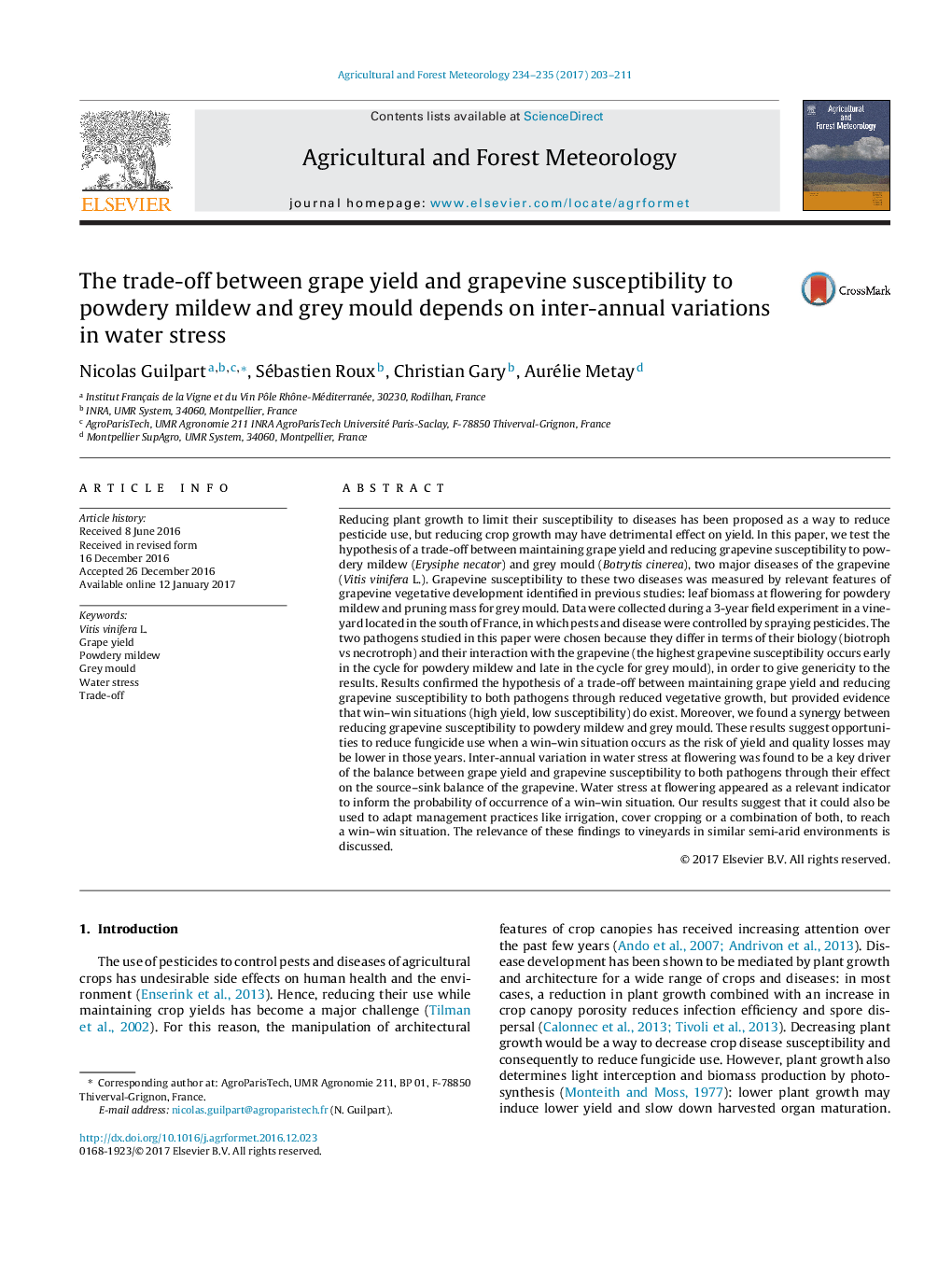| کد مقاله | کد نشریه | سال انتشار | مقاله انگلیسی | نسخه تمام متن |
|---|---|---|---|---|
| 6458004 | 1420863 | 2017 | 9 صفحه PDF | دانلود رایگان |
- A 3-year field experiment was conducted in a vineyard in the south of France.
- Grapevine yield and susceptibility to powdery mildew and grey mould often trade-off.
- Win-win situations depend on inter-annual variations in water stress at flowering.
- Adaptive management could help decreasing pesticide use while maintaining grape yield.
Reducing plant growth to limit their susceptibility to diseases has been proposed as a way to reduce pesticide use, but reducing crop growth may have detrimental effect on yield. In this paper, we test the hypothesis of a trade-off between maintaining grape yield and reducing grapevine susceptibility to powdery mildew (Erysiphe necator) and grey mould (Botrytis cinerea), two major diseases of the grapevine (Vitis vinifera L.). Grapevine susceptibility to these two diseases was measured by relevant features of grapevine vegetative development identified in previous studies: leaf biomass at flowering for powdery mildew and pruning mass for grey mould. Data were collected during a 3-year field experiment in a vineyard located in the south of France, in which pests and disease were controlled by spraying pesticides. The two pathogens studied in this paper were chosen because they differ in terms of their biology (biotroph vs necrotroph) and their interaction with the grapevine (the highest grapevine susceptibility occurs early in the cycle for powdery mildew and late in the cycle for grey mould), in order to give genericity to the results. Results confirmed the hypothesis of a trade-off between maintaining grape yield and reducing grapevine susceptibility to both pathogens through reduced vegetative growth, but provided evidence that win-win situations (high yield, low susceptibility) do exist. Moreover, we found a synergy between reducing grapevine susceptibility to powdery mildew and grey mould. These results suggest opportunities to reduce fungicide use when a win-win situation occurs as the risk of yield and quality losses may be lower in those years. Inter-annual variation in water stress at flowering was found to be a key driver of the balance between grape yield and grapevine susceptibility to both pathogens through their effect on the source-sink balance of the grapevine. Water stress at flowering appeared as a relevant indicator to inform the probability of occurrence of a win-win situation. Our results suggest that it could also be used to adapt management practices like irrigation, cover cropping or a combination of both, to reach a win-win situation. The relevance of these findings to vineyards in similar semi-arid environments is discussed.
Journal: Agricultural and Forest Meteorology - Volumes 234â235, 15 March 2017, Pages 203-211
